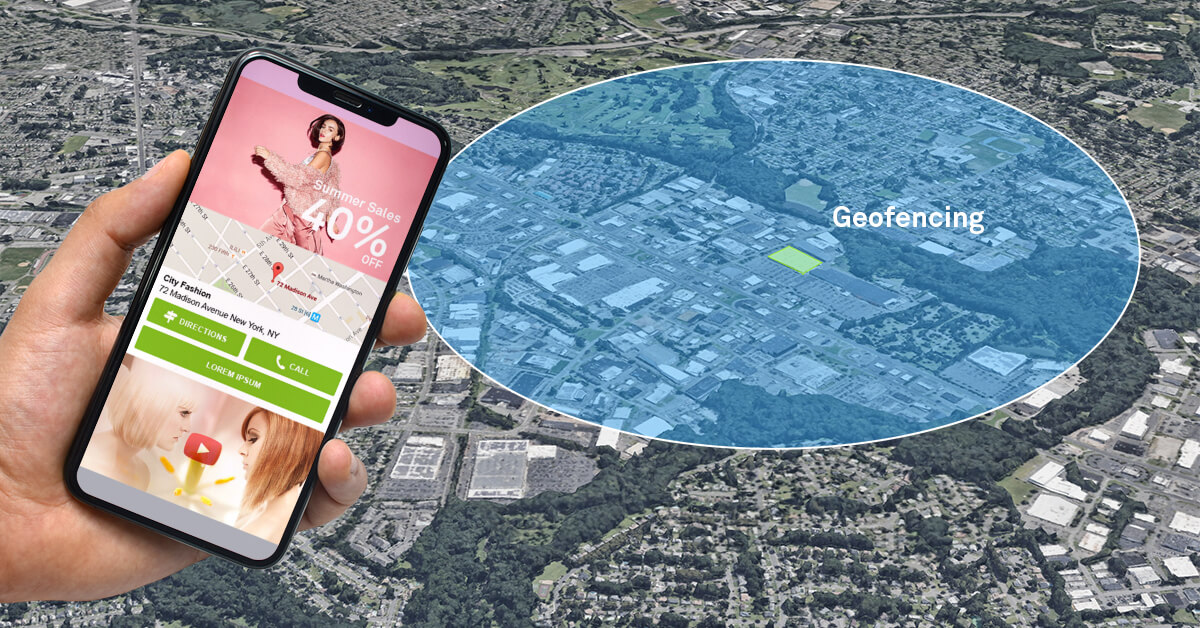In today’s world, companies and brands are constantly seeking innovative ways to attract potential customers. And, geofencing marketing is one of the methods that has gained popularity in recent years.
Geofencing marketing uses GPS or RFID technology to target customers within specific geographical areas. This allows businesses to create virtual boundaries around a certain geographic area, enabling them to target customers with personalized ads and offers once they enter or leave the designated area.
In this post, you’ll learn about the geofencing marketing technique that can help you find new customers.
Understanding Geofencing Marketing
As I pointed out previously, Geofencing marketing is the process of creating a virtual fence or boundary around a given geographical area, for example, a shopping mall, a rival’s store, or a city center.
When your mobile phone enters or exits this virtual fence, the business can program their app to trigger a targeted advertisement, promotion or notification to be sent to your device.
The main advantage is that this type of marketing lets you reach the targeted customers when they are in the right place and time.
When the customer is in the area of a business, they are more likely to be INTERESTED in the products or services offered, and the customer is the prime TARGET for marketing.
Consider an example of a coffee shop situated close to a busy downtown area. With the geofence being set up around several blocks in the vicinity, they can send a notification to the mobile devices of prospective customers. As well, they can give a special discount for their signature latte or a buy-one-get-one-free on pastries.
This promotional and geographically specific offer may spur these individuals to drop by the coffee shop and maybe turn into new customers.
Read More- How To Effectively Promote Your Blog and Boost Your Business in 2024?
Implementing Geofencing Marketing
To come up with a great geofencing marketing campaign, companies must take several essential steps.
- Define your target audience
First, you need to identify the demographics, interests, and behaviors of your ideal target group. Precisely, this piece of information is valuable because will guide you in making more targeted and impactful marketing messages.
- Find the best geofencing platform.
second, there are multiple geofencing platforms and services with distinct characteristics and rates. Therefore, find out what your business needs are and how much you can afford to spend to pick the platform that works for you.
- Set up your geofences
The third step is to figure out the geographical areas that you want to target and draw virtual fences around by using the tools of the geofencing platform.
You can even set up several geofences based on your marketing goals.
- Create compelling content
The fourth step is that you have to create the ads, promo, or notifications that your audience will find as engaging and relevant. Therefore, customize the content based on the location data and user activity to enhance its relevance.
- Monitor and optimize
Lastly, the continual monitoring of the results of your geofencing campaigns and making corrections where necessary is what you should do. Analyze the data to find where you are falling short and where you need to improve, then optimize your strategies to get the best results.
Benefits of Geofencing Marketing
Geofencing marketing could be very valuable to businesses as well as some of the following benefits.
- Increased customer engagement
Marketers now can target customers with the right message at the right time and place and, consequently, get more engagement and, thus, higher chances of converting leads to sales.
- Higher conversion rates
Location-based marketing allows businesses to connect with customers who are more likely to make a purchase of the products or services they offer and that ultimately leads to higher conversion rates and in turn, a better return on investment.
- Competitive advantage
Businesses can achieve a competitive advantage due to location-based marketing, which helps them to be distinguished from their competitors in the crowded marketplace.
- Precise targeting
Geofencing allows businesses to direct their ads to specific geographic areas with precision, thus eliminating wastage and focusing the ads on the right target audience.
- Real-time insights
Geofencing platforms generate the necessary data and information on customer behavior that businesses can use to tailor their marketing campaigns and make better decisions.
As another example, a restaurant chain could use geofences around popular tourist attractions in a city and send notifications to visitors” mobile devices offering a discount or a free appetizer when they visit the nearest restaurant location.
By focusing on the tourists who are already in the area and are exploring, the restaurant can, in this way, capture their attention and even convince them to become its new customers.
Read More- Google Ads Mistakes You Don’t Want to Make (and How Google Ads Agency Can Help)

